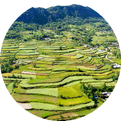 1、Overview of Codonopsis
1、Overview of Codonopsis
Codonopsis (Dang Shen) is a perennial herbaceous plant belonging to the Campanulaceae family. Its roots are cylindrical or long conical, measuring 30-60 cm in length, with a swollen apex that has numerous tuberous scars, commonly known as “Lion’s Head” or “Lion’s Disk Head”. The fresh product is white, with a heart of chrysanthemum, and turns yellowish after drying, featuring ring-like transverse stripes. The stem is twining or creeping, with many branches; the leaves are simple, entire, ovate, alternate or nearly opposite, with relatively long petioles, and young leaves are hairy. The flowers are solitary, bell-shaped, yellow-green with purple spots, blooming from August to September, and the fruiting period is from September to October; the capsule is conical, three-chambered, with persistent calyx; the seeds are numerous, small, brown, oval-shaped, weighing 0.28-0.31 grams per thousand seeds.
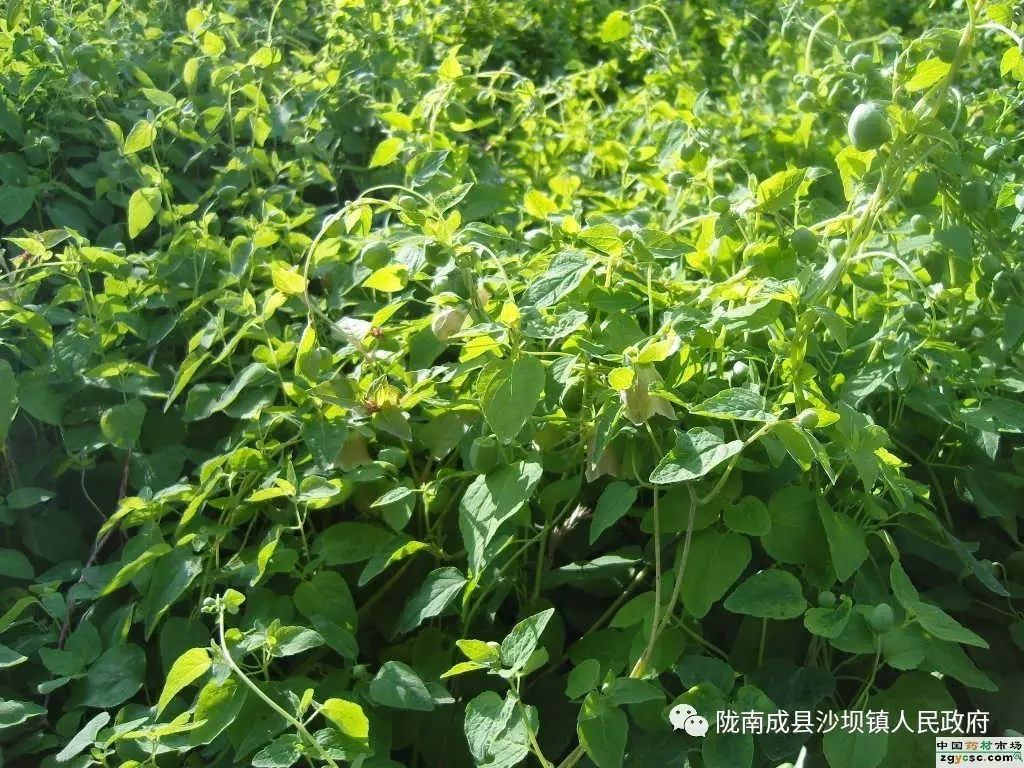
2、Medicinal Properties of Codonopsis
Codonopsis has a sweet flavor, is neutral in nature, and is associated with the Spleen and Lung meridians. It has the effects of tonifying the middle and benefiting Qi, strengthening the Spleen and benefiting the Lung, and generating fluids to quench thirst. It is used to treat conditions such as Spleen and Lung deficiency, Spleen and Stomach weakness, insufficient Lung Qi, shortness of breath, palpitations, poor appetite, loose stools, weak cough, internal heat with thirst, and general fatigue. It is a commonly used tonic and strengthening herb.
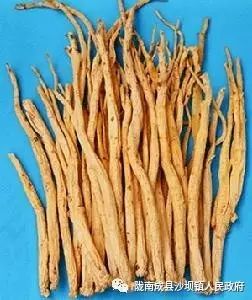
5、Biological Characteristics of Codonopsis
Codonopsis has strong adaptability and prefers a mild and cool climate. Different growth stages have varying requirements for moisture, temperature, and sunlight. The suitable temperature for seed germination is 18-20°C, seedlings prefer shade, while mature plants prefer sunlight. It can withstand high temperatures of 33°C and can safely overwinter at -30°C. It is prone to root rot in poorly drained and high-temperature, high-humidity conditions.
Codonopsis is a deep-rooted plant, thriving in soil with a pH of 6.5-7.0, and should not be planted in the same location for consecutive years; it is generally recommended to wait 3-4 years before replanting, with legumes or grasses as the preceding crops.
Seeds from three-year-old plants have a high germination rate, generally over 90%. Storing seeds at room temperature for a year reduces germination rates, and exposure to smoke or salt during storage can lead to loss of germination ability.
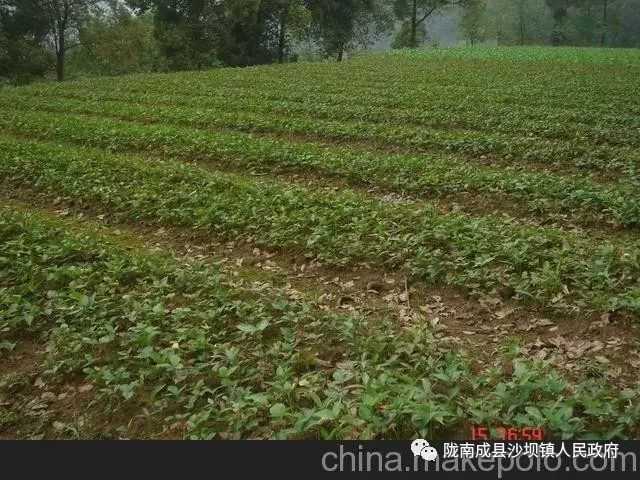
6、Cultivation Management of Codonopsis
Codonopsis is a deep-rooted plant and should be cultivated in deep, loose, fertile, and well-drained sandy loam. It is not suitable for planting in drought-prone hills or low-lying areas prone to flooding.
The nursery site should be close to a water source with relatively moist soil; the transplanting site should be on higher ground with good drainage to prevent the spread of root rot.
When cultivating Codonopsis on wasteland, it is advisable to clear trees and weeds in the autumn of the first year, dry and pile them up, burn them to create ash fertilizer for the field, then plow to a depth of 30 cm, and immediately rake and level the soil. Depending on the requirements for nursery or transplanting, make beds or ridges. Generally, nursery beds should be made, with a width of 1.2-1.3 meters, and the length determined by the terrain for proper drainage; in low-lying areas, high beds should be made, and in dry areas, flat beds should be made, with a height of about 15 cm and a spacing of about 30 cm between beds; transplanting areas should be ridged, generally with a width of 50-60 cm.
Using cultivated land to grow Codonopsis is also beneficial, with autumn plowing, soil preparation, and bed or ridge making in the autumn to avoid spring drought, which is unfavorable for seedling emergence. When using cultivated land, it is recommended to apply organic fertilizer of 2000-3000 kg per acre during plowing.
Seeds can be sown in both spring and autumn. Autumn sowing generally yields better seedlings, while spring sowing is best done after preparing beds or ridges in the previous autumn to retain moisture. Autumn sowing should be completed from early October until the ground freezes; spring sowing should be done from late March to early April, generally using broadcasting or row sowing methods. To promote seed germination and robust seedling growth, it is best to soak Codonopsis seeds in a 50PPm gibberellin solution for 6 hours before sowing, then rinse with clean water and allow to dry slightly before sowing, which can increase germination rates by 115.3%. Due to the small size of Codonopsis seeds, to ensure even sowing and prevent them from being blown away by the wind, it is advisable to mix the seeds with wood ash, fine sand, or fine soil before sowing. For broadcasting: evenly scatter the mixed seeds over the bed surface, then cover with a thin layer of soil to cover the seeds, followed by a layer of straw, using 2-2.5 kg of seeds per acre; for row sowing: make a sowing board with a row spacing of 20 cm, or open shallow furrows on the prepared bed with a row spacing of 20 cm and a sowing width of 10 cm, evenly sow the mixed seeds in the furrows, lightly cover with fine soil, press down slightly, and then cover with straw, using 1.5-2 kg of seeds per acre; for ridge sowing: open shallow furrows along the ridge with a hoe, then evenly sow the seeds in the furrows, lightly cover with fine soil, and press down slightly.
In the nursery, beds should be made, and the sowing period and methods are the same as for direct sowing. Seedlings can be transplanted in the autumn or spring after one year of growth, with generally 5-8 acres of seedlings transplantable from one acre of nursery.
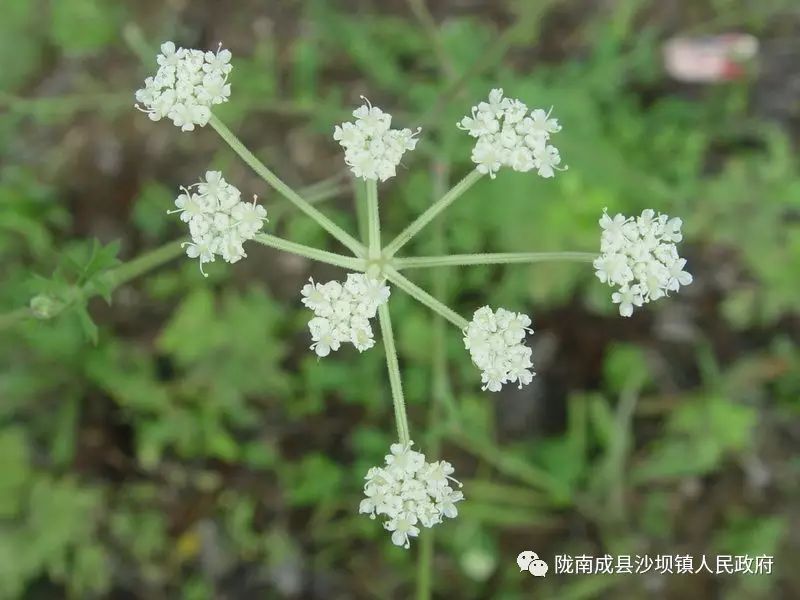
Spring transplanting should be done before the buds start to sprout, from late March to early April; autumn transplanting should be done in mid to late October, before the soil freezes, with autumn transplanting generally preferred. It is best to choose cloudy days or late afternoons for transplanting. If the soil is dry, it should be watered appropriately 1-2 days before digging up the seedlings to keep the soil moist and prevent damage to the seedlings. For nearby transplanting, seedlings should be planted immediately after digging; for long-distance transport, Codonopsis seedlings should be packed in wooden or cardboard boxes, with the buds facing inward and the roots against the box wall to prevent damage during transport. If not planted on the same day after transport, they should be temporarily planted. For ridge planting: open a 15-20 cm deep furrow along the ridge, plant at a spacing of 8-10 cm at an angle, and cover with 5-7 cm of soil, pressing down promptly to retain moisture; for bed planting: open furrows on the bed surface according to a row spacing of 20 cm, with the depth of the furrow depending on the size of the seedlings, generally ensuring that the fibrous roots are not curled, and plant at a spacing of 8-10 cm either upright or at an angle, covering with 3-5 cm of soil, pressing down slightly. If spring planting is delayed and seedlings have already emerged, the stems and leaves should be left above the soil during transplanting, and promptly covered with straw or rice straw, then watered, waiting for 3-5 days for the seedlings to adapt before removing the covering and lightly loosening the surface soil.
In addition to direct planting, Codonopsis can be intercropped with corn or wheat; it can also be intercropped with medicinal herbs such as Huang Lian (Coptis chinensis), Bei Mu (Fritillaria), and Xi Xin (Asarum). The specific method is to plant corn or wheat beside the nursery beds, and when the corn seedlings are about 30 cm high or the wheat seedlings are about 6 cm high, evenly sow the mixed Codonopsis seeds into the soil, using the leaves of corn and wheat for shade; in autumn or spring, transplant 1-2 year old Codonopsis seedlings beside the Huang Lian, Bei Mu, and Xi Xin beds, and when the Codonopsis seedlings reach about 30 cm in height, use bamboo sticks to support them, allowing the stems to climb and intertwine for shade.
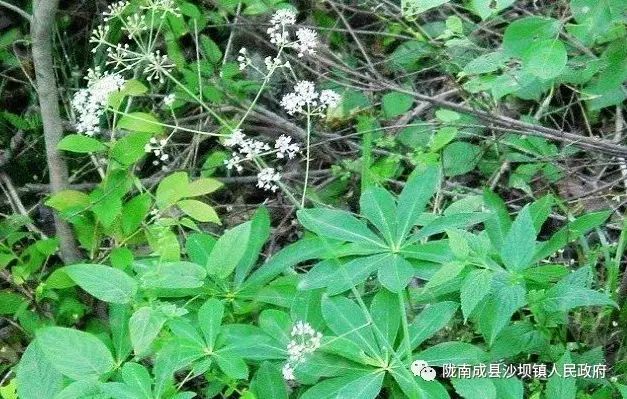
7、Field Management of Codonopsis
(1) Covering: After spring sowing in direct-seeded and nursery fields, to retain moisture and facilitate seedling emergence, the bed surface should be covered with straw, which should not be too thick to maintain moisture. Once seedlings emerge, the straw should be removed. In hot southern climates, shade structures should be set up during the seedling stage to avoid strong light.
(2) Watering: After spring sowing, the bed surface should be kept moist to facilitate seed germination and seedling emergence. During the seedling growth period, timely watering is necessary during drought, preferably before 8 AM or after 3 PM.
(3) Thinning and Weeding: During the seedling stage of Codonopsis, weeds should be removed as soon as they appear to prevent weed overgrowth; when seedlings reach a height of 5-7 cm, thinning should be done to a spacing of 3 cm, and for severely lacking areas, replanting should be done. For direct-seeded fields, thinning should be done in two stages, with the first thinning time and density the same as for nursery fields, and the second thinning should be done in the spring of the second year after emergence, determining seedlings at a spacing of 5-7 cm, removing overcrowded seedlings and replanting in sparse areas.
(4) Weeding and Soil Loosening: For transplant fields or fields with Codonopsis older than two years, timely weeding and soil loosening should be done, generally 3-4 times during the growing season. For ridged fields, ridge cultivation should be done from late July to mid-August, and after the above-ground plants wither in late autumn, shallow hoeing should be done first, followed by ridge cultivation.
(5) Fertilization: Codonopsis is a fertilizer-loving plant. In mid-July, apply a mixture of 10 kg of ammonium sulfate and 15 kg of superphosphate per acre. The fertilization method is to open a 6 cm deep trench at a distance of 10 cm from the root, apply the fertilizer, and then cover with soil. (6) Support: When seedlings reach a height of 30 cm, use branches or thin bamboo poles to support them, allowing the stems to climb and intertwine, which facilitates ventilation and light penetration, promoting Codonopsis growth.
(7) Cold Protection: In cold regions, after the above-ground parts of Codonopsis wither in late autumn, cover with protective soil to prevent frost damage, and remove it before the Codonopsis buds sprout in the following spring.
(8) Field Cleanup: After the above-ground parts of Codonopsis wither, promptly remove residual stems and leaves, dismantle supports, and disinfect the field with a 50% carbendazim solution diluted to 800-1000 times to reduce the spread of diseases.
8、Seed Harvesting
Generally, select three-year-old plants for seed production. From late September to early October, when most of the fruit skins turn yellow and the seeds turn brown, harvesting can begin. Since the maturity period of Codonopsis seeds is not uniform, harvesting should be done as they ripen to prevent the fruit shells from splitting and seeds from falling off.
9、Pest and Disease Control of Codonopsis
The main diseases affecting Codonopsis include root rot, rust, and purple stripe disease.
Root rot: The pathogen is a type of fungus, with both chronic and acute forms. The chronic type begins to show symptoms in mid to late May. In the early stages, dark purple spots appear on the lower fibrous roots or lateral roots, which then turn black and rot. Once the disease spreads to the main root, it gradually rots from the bottom up. The remaining healthy parts are often referred to as “half-rotted Codonopsis”, with the area near the rot appearing blackish-brown, and the above-ground stems and leaves gradually yellowing, leading to death. The acute type usually begins to show symptoms in mid to late June, where once the root is infected, the entire root almost simultaneously shows symptoms, appearing water-soaked, softening in texture, and the vascular bundles turning light brown, leading to soft rot within a few days. After rotting, a small amount of grayish-white mold may be visible.
Control measures: Implement crop rotation, avoid heavy cropping; carefully select seeds before sowing, removing diseased seeds, and use healthy, disease-free Codonopsis plants for transplanting; ensure good drainage during rainy seasons; during the disease period, spray with a 50% dichlorvos solution diluted to 200 times, or irrigate with a 50% carbendazim wettable powder solution diluted to 1500 times.
Rust: Affects the leaves, stems, and flower receptacles. Leaf spots are light brown with yellow halos around them. The spots on the leaf backs are raised, with orange-yellow summer spores; later, they rupture and release a large number of summer spores. The spots on the stems and flower receptacles are larger. In the northeast and north China regions, rust is more severe in autumn.
Control measures: Timely cleanup of the field; at the initial stage of the disease, spray with a 300 times diluted rust preventive powder; or use a 50% dichlorvos solution diluted to 200 times or sodium rust preventive diluted to 200 times, spraying every 7-10 days for 2-3 times.
Purple stripe disease: The fibrous roots are affected first, then the main root becomes infected, with purple-red fuzzy mycelial strands appearing on the root surface, eventually covering the entire root, causing it to rot or disintegrate from the outside in, leading to the root becoming a blackish-brown hollow shell. This disease begins in early July, peaks in August, and poses a long-term threat in the field; it is more severe during the hot, rainy summer.
Control measures: Cultivate disease-free Codonopsis seedlings; treat the soil with a 40% carbendazim gel suspension diluted to 500 times or a 25% carbendazim wettable powder diluted to 300 times, applying 5 kg per square meter; before transplanting, soak the Codonopsis roots in a 40% carbendazim gel suspension diluted to 300 times for 30 minutes, allow to dry slightly before planting.
The pests affecting Codonopsis include grubs, cutworms, mole crickets, and spider mites. Underground pests include grubs, cutworms, and mole crickets; above-ground pests include spider mites.
Control methods for underground pests: Use toxic soil and bait to lure and kill them. Toxic soil preparation: use 0.5-1.5 kg of 35% phoxim per acre mixed with 15 kg of soil, and sprinkle it around the roots; bait preparation: use 1 kg of roasted cake flour mixed with 35 g of dichlorvos, mix with water, and sprinkle on the bed surface, bed edges, or ridges.
Control methods for above-ground pests: The above-ground pest of Codonopsis is the spider mite, which generally occurs in July, and can be controlled by spraying a 40% methomyl emulsion diluted to 1000-1500 times.
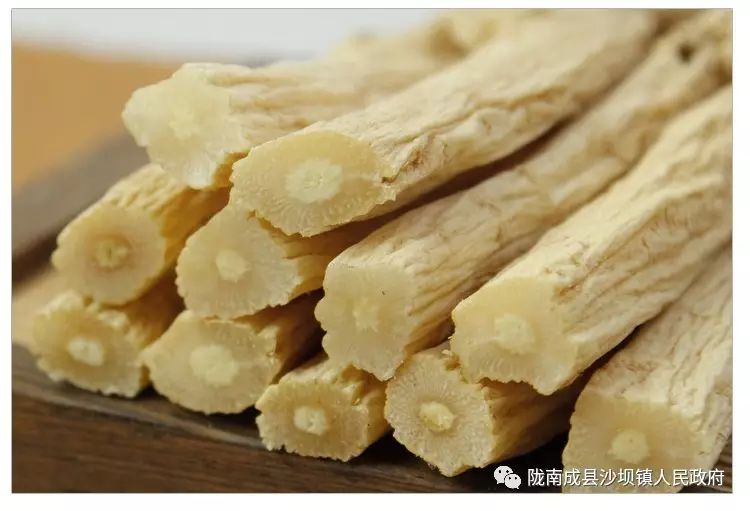
10、Harvesting and Processing of Codonopsis
Direct-seeded fields are harvested after three years, while transplanted fields are harvested after two years of growth. The optimal harvesting period for Codonopsis is when the above-ground parts wither until just before the ground freezes, but the best quality is obtained when harvested within half a month before the White Dew solar term.
During harvesting, first remove the supports, cut off the stems and vines, and then dig up the roots, taking care not to damage the roots to prevent sap loss.
The harvested roots should have the remaining stems removed, be washed clean of soil, and sorted by size, length, and thickness into old, large, and medium roots for drying. After drying to a semi-dry state, briefly blanch in boiling water, then dry or bake (baking should only be done at low heat, ideally around 60°C, and not with high heat, as this can cause bubbling and separation of skin and flesh). When the roots become soft, they should be sorted 3-5 times, then bundled into small bunches, placed on wooden boards, and repeatedly pressed and kneaded, then continue drying. Kneaded Codonopsis roots should have thin skin, firm and plump flesh, and be suitable for storage. The sorting process should not be excessive, and the force should not be too strong, or they may become “oil sticks”, reducing quality. After each sorting or kneading, they must be spread out to dry and not piled up to avoid fermentation, which affects quality.
Processed Codonopsis should have thick roots, firm texture, oily sheen, strong aroma, and minimal residue when chewed for optimal quality.
Supervised by: Deng Liqiang
Editor: Niu Baojiang Current Editor: Chen Wenli



